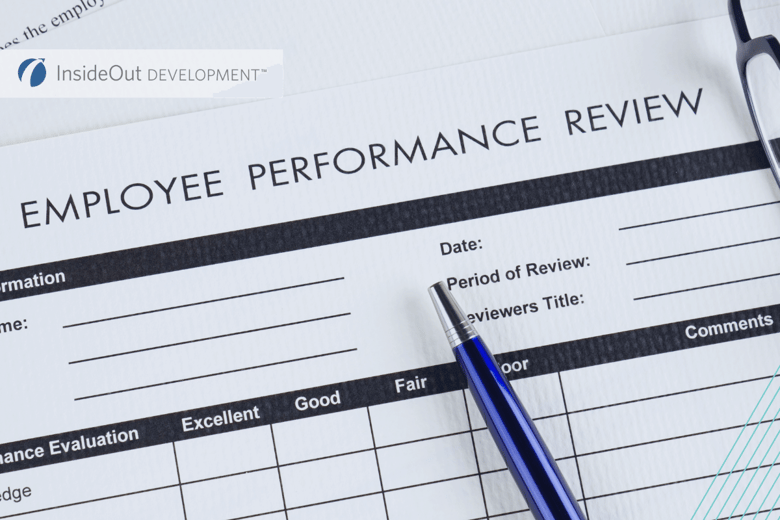Did you know that 47% of millennials started looking for a different job after receiving a performance review? That is why it’s crucial to get your performance conversation right the first time around.
We will admit, engaging in a performance-based conversation with an employee can be a challenge. You’ve gotten to know them over the years, and the last thing you want to do is to make them upset.
But even with this internal dialogue, you know that it’s essential for the employee to understand how they can grow as a team member — not just for their own benefit but for the sake of everyone involved.
So, how can you navigate this delicate situation without assuming the role of the "bad guy"? From preparing for the meeting to addressing the issues at hand and beyond, we're committed to leaving no stone unturned in this article.
Let’s dive in.
Preparing for the Performance Conversation
Studies have shown that 92% of employees want feedback more often than just once a year. So, if you find yourself feeling nervous about initiating the conversation, take solace in the fact that your employees will likely appreciate it just as much as you do.
The best way to ensure that your performance conversation goes over smoothly is to prepare ahead of time. Some ways to prepare include:
- Set clear objectives and goals
- Gather relevant data and documentation
- Plan the timing and location
- Anticipate potential challenges or obstacles
By taking these extra steps prior to the meeting, you will be set and prepared to have the conversation when the time is right.
Next, let’s talk about how creating a positive environment can have an impact on the outcome of the discussion.
The Importance of Creating a Positive Environment
Fostering a positive environment where employees feel heard and valued is vital to ensuring the effectiveness of your performance conversation. .png?width=600&height=400&name=Importance%20of%20Positive%20Environment%20Image%20Performance%20Conversation%20Blog%20(1).png)
To improve the likelihood of conversation success, you will want to establish an environment that:
- Has a positive rapport
- Holds no judgment
- Is full of empathy
- Hosts a safe space for discussion
Implementing these tips, the employee on the receiving end of the conversation is more likely to approach these discussions with openness and a willingness to grow professionally. At the end of the day, performance management is all about conversations.
How to Address Employee Performance Issues: Structuring the Conversation
You’ve prepped for the meeting. You’ve taken the time to create a positive environment. Now, how can you structure the conversation for success?
Here are the top ways to structure the conversation — the right way:
- Begin with a positive opening: Start the conversation on a positive note by highlighting the employee's strengths and achievements. This sets a constructive tone and shows appreciation for their contributions.
- Address specific performance issues: Clearly and directly address the specific performance issues that need to be discussed. Be specific and avoid generalizations. Focus on behaviors and outcomes, providing constructive feedback.
- Provide specific examples and observations: Support your feedback with specific examples and observations to illustrate the impact of the employee's performance. This helps them understand the context and facilitates a more meaningful discussion.
- Encourage employee's perspective and input: Actively listen to the employee's perspective and encourage them to share their thoughts and insights. Create a safe space for open dialogue where they feel comfortable expressing their viewpoint. This fosters engagement and ownership of the conversation.
- Collaborate on setting goals and expectations: Work together with the employee to establish clear and achievable goals for improvement. Collaborative goal-setting ensures that expectations are understood and accepted by both parties.
- Discuss support and resources: Lastly, you will want to address any support or resources that can aid the employee in their growth and development. This could include additional training, mentoring, or access to relevant tools. Identify any barriers they may face and explore solutions together.
Tips for Communicating Poor Performance to an Employee
We understand that communicating poor performance can be difficult to do — which is why we wanted to give you a few insider tips to help you out. If you need to communicate poor performance to an employee, consider the following key points:
- Use clear and concise language
- Use "I" statements and avoid blame
- Balance constructive criticism with positive feedback
- Ask open-ended questions for a deeper understanding
- Actively involve the employee in problem-solving
Using this empathetic and solution-oriented approach, you will cultivate a culture of continuous improvement and will ensure that you aren’t placing blame on the employee you are talking to. Instead, you are just wanting to come to a mutually beneficial conclusion together.
Overcoming Challenges During an Employee Performance Conversation
"What if I encounter challenges during the performance conversation?".png?width=600&height=400&name=Overcoming%20Challenges%20Image%20Performance%20Conversation%20Blog%20(1).png)
While performance conversations can often proceed smoothly, it's important to be prepared for potential challenges that may arise. By anticipating and planning for these obstacles, you can navigate them effectively and ensure a productive discussion.
Dealing With Defensiveness or Resistance
It's not uncommon for employees to become defensive or resistant when receiving feedback on their performance. To address this, approach the conversation with empathy and understanding.
Listen actively to their concerns and perspectives, validate their emotions, and reiterate your intention to support their growth. Encourage open dialogue and focus on constructive solutions rather than dwelling on blame or criticism.
Managing Emotions and Maintaining Professionalism
Emotions can run high during performance conversations, both for the employee and the manager. It's crucial to remain calm, composed, and professional throughout the discussion.
Practice active listening and empathy and strive to create a safe space where both parties feel respected and heard. If emotions escalate, consider taking a brief break to allow for a cooling-off period before resuming the conversation.
Addressing Sensitive or Personal Issues Tactfully
Occasionally, performance conversations may involve sensitive or personal matters. In these cases, approach the discussion with tact and sensitivity. Choose your words carefully, focusing on the behavior or performance rather than making personal judgments.
Handling Disagreements or Conflicts
Disagreements or conflicts may arise during performance conversations, particularly if there are differing perspectives or interpretations. Aim for a resolution that aligns with the organization's goals while addressing the concerns of all involved.
Improve Performance Through Follow-Up and Continued Support
As a closing remark, we want to talk about how you can continually support your employee — in post-performance conversations. .png?width=600&height=400&name=Continued%20Support%20Image%20Performance%20Conversation%20Blog%20(1).png)
It’s no secret that sustained support is crucial for an employee’s professional development. Here are some effective ways to continue supporting your employees:
- Summarize the conversation and document agreements
- Provide ongoing feedback and coaching
- Schedule regular check-ins and progress updates
- Offer additional resources or training opportunities
Following these points, you can promote a work environment that is both supportive and employee-centric.
When Your Employees Succeed, So Do YOU
To draw everything together, establishing an open line of communication with your employees is essential. But it's equally important to transform the performance conversation into a meaningful dialogue rather than a one-sided exchange.
By fostering a sense of collaboration and empowerment, you enable employees to feel heard and valued, while guiding them toward their own conclusions about their performance.
As leaders and managers, it is necessary to apply the strategies discussed today with confidence and empathy.
Embrace the role of a facilitator, creating an environment where employees have the opportunity to contribute their perspectives and take ownership of their professional growth. Doing so will not only foster a culture of continuous improvement but will also set your organization and employees up for success.
What if we focused LESS on an annual checklist and instead took a step back to look at the fundamentals? Here are some critical key considerations when it comes to evaluating performance reviews.






